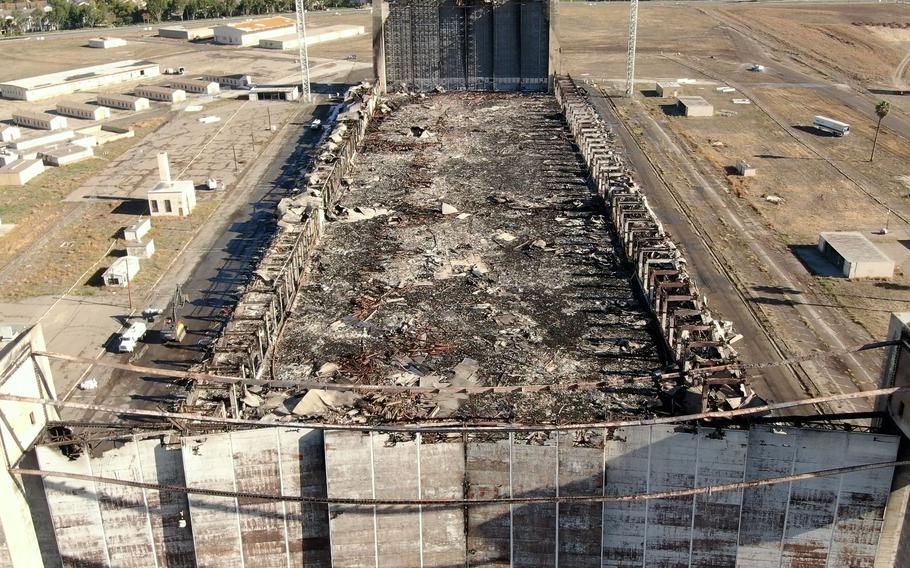
The ruins of the North Hangar at the former Marine Corps Air Station Tustin, Calif., soon after the Nov. 7 fire. (City of Tustin)
The Navy has received approval to remove the remnants of a massive World War II blimp hangar destroyed in a fire in November at the shuttered Marine Corps Air Station in California.
Naval Facilities Engineering Systems Command announced Monday that 10 military, federal, state, regional and local agencies had signed off on the cleanup plan that could reach $150 million.
“July 8 kicked off the start of fieldwork,” said David Bennett, a Navy spokesman for the Base Closure and Realignment office in San Diego handling the planning.
Scraping the “footprint” of the 17-story, 1,000-foot-long and 300-foot-wide hangar is the last major part of a recovery and remediation process from the fire that started Nov. 7 and smoldered for 24 days. According to the Orange County Fire Authority, no cause has been established for the blaze.
The Navy has allocated $88 million to reimburse the city of Tustin for the cleanup and toxic-materials testing in the suburban community adjacent to the former military base. In May, Tustin Mayor Austin Lumbard estimated the final cost to his city could be as high as $137 million.
Under an agreement signed soon after the fire, the Navy reimbursed Tustin for its costs through a series of five amendments. A sixth amendment is under negotiation.
When the work contracted directly by the Navy on the hangar is added, the price tag for the fire could top $150 million.
In December, the Environmental Protection Agency announced the Navy was responsible for emissions from the fire that destroyed one of two hangars built in 1942 amid farmland south of Los Angeles.
Made primarily with 2 million board feet of Douglas fir, the hangars housed Navy blimps that patrolled the California coast looking for Japanese submarines and ships.
The site eventually grew to become the 1,600-acre Marine Corps Air Station Tustin. It closed in 1999 as part of a post-Cold War shutdown of what was deemed excess military property. The Navy ceded the land to local authorities, except 225 acres that included the blimp hangars, which are listed as national historic sites.
Many residents and local officials have been critical of what they saw as delays in the Navy’s action to clear the site. Early fears that the fire had exposed residents to asbestos, lead and other toxic chemicals have been largely abated by state, county and private testing of air, ground and water samples showing no danger of exposure.
Lumbard called the burnt hangar an “eyesore” that millions of people driving on nearby Interstate 5 or passengers looking out their windows as their planes landed at nearby John Wayne Airport could see.
The demolition and debris removal from the hangar site are on Navy property. The service signed a $6 million contract with ECC Environmental for the project.
Work in the area of the hangar will occur within sealed tent structures, which will create a pressure vacuum to ensure any dust emissions remain within the enclosure.
Charles Perry, the Navy’s closure manager for the former base, called the cooperation between the agencies “tremendous” in developing a final plan to clear the site.
Lumbard also expressed a conciliatory tone.
“We appreciate our continuing partnership with the Navy, and the effort by all stakeholders to reach this milestone to advance the Navy’s onsite cleanup,” he said.